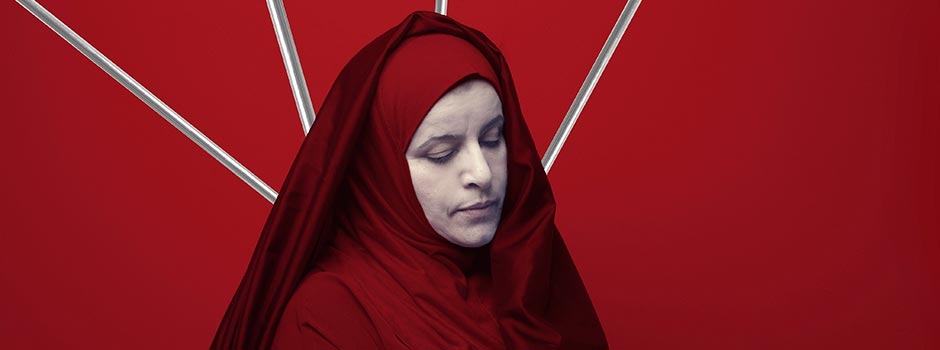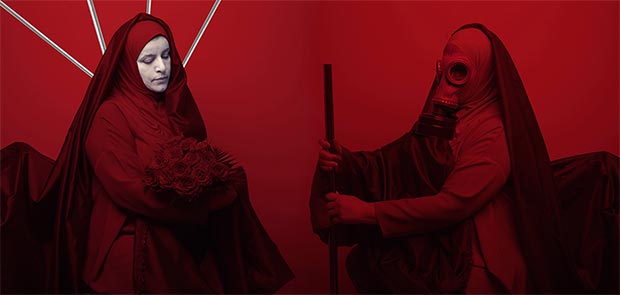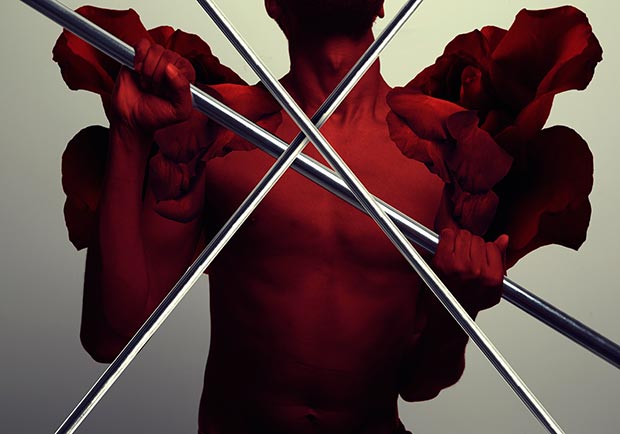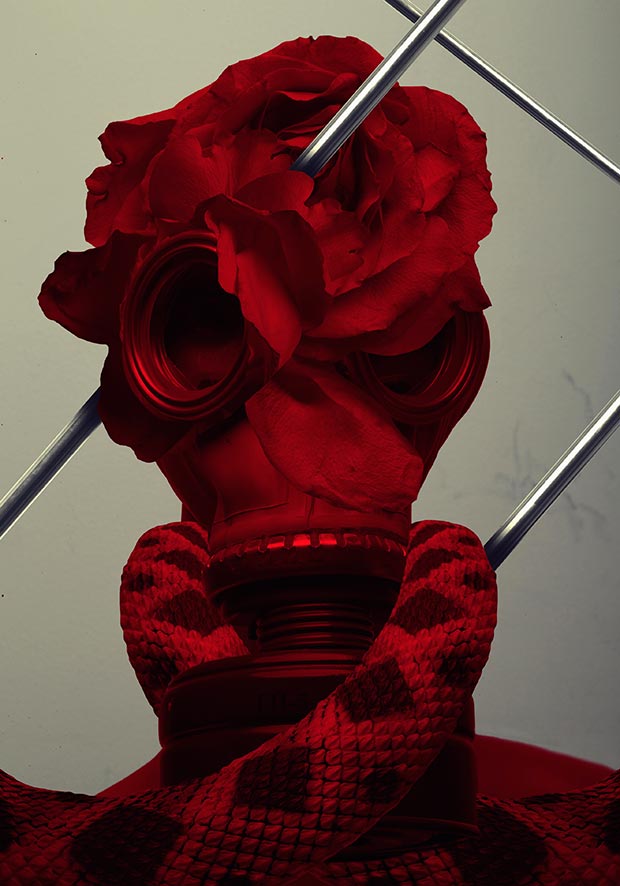
EXHIBITION (Dec 10, 2014 - Jan 17, 2015) Sabrina Amrani Presents Emerging Emirati Artist Saeed Khalifa for the First Time in Europe
Dec 11, 2014 Exhibition

Where is the line drawn between aesthetics and politics? While both remain concepts and structures of paramount importance, the aesthetic view postulates the sublime as a type of moral greatness which supersedes and overcomes the 'need' for politics. The complex political vocabulary of Modernity nevertheless, encompassing everything in between art and historical consciousness, film and activism, poetry and technological imagination, calls for an unmediated encounter between the stability of the sublime and the unpredictability of life.
As a recipient of the 3rd International Emerging Artist Award for Emirati artist in 2014, Saeed Khalifa's first European solo show opened at Sabrina Amrani. The exhibition will run until January 17, 2015.
 Saeed Khalifa / War, 2014. Inkjet print on Ilford Golden Fiber Silk paper. 210x100 cm. Ed. of 3. / Courtesy of Sabrina Amrani Gallery and the Artist
Saeed Khalifa / War, 2014. Inkjet print on Ilford Golden Fiber Silk paper. 210x100 cm. Ed. of 3. / Courtesy of Sabrina Amrani Gallery and the Artist
Khalifa's impeccable photography, charged with uproarious theatricality and touching performative elements, draws less on art history than on the boundless sensuality of the world, unprotected by the normative elements of social discourse, presenting the human flesh as indistinguishable from emotions and composite bodies. In this political anatomy, while celebrating difference, the artist stresses the fundamental alienation of our contemporary situation in which the withering of public life gives way to a newfound intimacy which is astonishingly public and on plain sight.'Beasts' is a reflection about a world in transition in which the bare human of bio-politics and bio-power is a chain of chemical reactions and instinctual reflexes. Is that then the common theme of humanity? For now it's only a question.
The series "ROKN" (translated rough as 'pillar' in Arabic), is making use of the process of prayer in Islam, laid out in an anatomical description, detailing all the movements involved, in a laconic but ambivalent journey towards submission and freedom. The faceless body - here a metaphor or an archetype for something larger than itself - motions from agony into strength, in almost cyclical manner, embracing a transformation from inertia to flight. As the wings grow, the prayer turns into liberation and the gaze fixed upwards. How is it possible to find authentic freedom in a world of hostilities and borders? Khalifa's idea of prayer and ascent is sited somewhere beyond religious ritual: Freedom is the opposite of alienation, therefore, the process is always internal.
 Saeed Khalifa / Rokn V, 2014. Inkjet print on Ilford Golden Fiber Silk paper. 100x70 cm. Ed. of 3. / Courtesy of Sabrina Amrani Gallery and the Artist
Saeed Khalifa / Rokn V, 2014. Inkjet print on Ilford Golden Fiber Silk paper. 100x70 cm. Ed. of 3. / Courtesy of Sabrina Amrani Gallery and the Artist
In parallel, along a familiar aesthetic territory but with a different order of questions, the series "Call for Calvary", again epitomizes the religious metaphor of martyrdom in different traditions, in a language familiar to both Islam and Christianity, but aimed at a higher figure of speech: The large pieces "War" and "The Bride", at the very conceptual center of this solo exhibition, represent duality and duel. In the former, warriors are represented as opposites, which ultimately merge, and in the latter, the consequence becomes manifest, the casualties of war. The eponymous works, "Call for Calvary", I to V, show the anonymous warriors in the same struggle of the penitent prayer. Central to Saeed Khalifa's practice here is the need to articulate difference through sameness of experience.
Without avoiding the subject of politics - in fact, being here very much confronted with it, Saeed Khalifa develops a sharp articulation of our condition, without falling for historical melancholy or apocalypticism. True to his humorous self, the artist deploys subtle symbols for a complex world, embedded in brutal conflict. 'Beasts' is about the image of a primal self, devoid of identities and roles, developed on the edges of culture and tradition. This primal self, the hidden subject, is a hybrid creature embodying intense passions and strong feelings. In the rouge color of Khalifa's compositions, a syntax of conflict slowly disintegrates, leaving us at the mercy of the purely human, elevating the gesture into something sculptural and lasting.
 Call for Cavalry II, II and I, 2014. Inkjet print on Ilford Golden Fiber Silk paper. 70x100 cm. Ed. of 3.
Call for Cavalry II, II and I, 2014. Inkjet print on Ilford Golden Fiber Silk paper. 70x100 cm. Ed. of 3.
Saeed Khalifa (born 1989 in Dubai, UAE) is a self taught visual artist who lives and works in Dubai. He mainly works with digital photography, but lately he is approaching other mediums such as installation, video and hand crafted works. He also works as fashion photographer, a job that clearly influentiates his practice. Khalifa is attracted to the unusual and the little things that people usually do not notice. He incorporates a lot of illustration background in his photographies, painting over his images digitally to bend their reality: his intense-labour digital practice is comparable to the strokes of the painter.
The artist is interested in body language, which is overlooked in modern society as a form of communication method. He usually works with the body of the human being as a canvas and tends to keep the subject of the image honest but the surroundings bent or broken, creating a personal and twisted wonderland for the viewer to be transported to a parallel universe. He also features animals in his works to signify a certain truth humans don't want to face: their emotions lead them to honest and true actions as opposed to the human being, who is dominated by political, social codes, moral values and concepts created by man.
The artist’s first solo show was held in 2011 at The Ara Gallery, Dubai (UAE). He has also exhibited in group shows since 2009 at Tashkeel, Dubai (UAE); The Ara Gallery, Dubai (UAE); and Ayyam Gallery, Dubai (UAE). His work is part of important private collections in the Middle East, including The Samawi Collection, and has been auctioned in Christie’s Dubai with spectacular results.
Comments
Add a comment